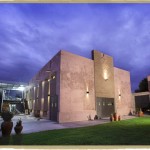NH Retail Price/Code
•AMAUTA                                     $19.99 – 14955 and 20090
•LABORUM                                   $29.99 – 14956/58/20085/86
SCROLL DOWN FOR: The Wines, The Winemakers, The Vineyards, Sustainable Agriculture
THE LABORUM WINES
Malbec, Single Vineyard, Laborum – NH Code: 14958
Malbec, Single Vineyard, Laborum 20012 – NH Code: 20085
Tannat, Single Vineyard, Laborum – NH Code: 14956
Cabernet Sauvignon, Single Vineyard, Laborum – NH Code: 20086
THE AMAUTA WINES
Amauta I – “Innovation” – NH Code: 14955
Amauta IV – “Inspiration” – NH Code: 20090
THE WINEMAKER
Francisco “Paco” Puga

THE VINEYARDS
Our vineyards are located in Cafayate at 1,750 meters (5,740 feet) above sea level. Today we have 192 acres of our own vineyards, planted with the utmost care and divided into two estates: RÃo Seco and El Retiro.
The climatic characteristics of the zone of Cafayate are perfect for the development of high-level vitviniculture.
The deep, sandy soil, poor and without limiting topsoils, gives us the perfect base for the cultivation of the vines.
The temperatures are truly ideal, as due to the altitude of the zone we have a day-night difference of 15- 18ºC (59-64ºF) during the vegetative cycle of the vine. This translates into a notable difference in the polyphenols in the wine compared to lower altitude zones, giving wines with better structure and color, more suited for oak aging and for the later storage and favorable evolution in the bottle.
The solar radiation necessary to bring the grapes to an optimal ripeness level is guaranteed by at least 350 days of brilliant sunlight, which allows for easy ripening in every facet of the plants every year.
In respect to rainfall, it varies, with some years more dry and others more rainy, but the average yearly rainfall is only 120 millimeters. Outside of these rare periods water is provided to the vineyards through very well-studied irrigation methods, with which we can manage almost every factor that goes into the quality of the grapes.
Finally, we are almost completely free of hail, which is a much more serious problem in the other vitivinicultural regions of Argentina.
SUSTAINABLE AGRICULTURE
The goal of sustainable agriculture is to achieve stable production, in harmony with the ecosystem of the site and in a socially acceptable fashion. In other words, it should be based upon the three pillars of sustainability, which are:
- Economic sustainability
- Ecological sustainability
- Social sustainability
One of the fundamental challenges in this type of agriculture is the efficient use of resources. To care for, maintain, and even improve the available resources, is the responsibility of the current generation to future generations.
Conscious of this responsibility, Bodega El Porvenir de los Andes has implemented in their vineyards some of the practices known to achieve such sustainability:
Rational use of chemicals: Integrated management of pests, in which the use of chemical pesticides is used more sparingly and in combination with natural techniques to lower the level of pests. Also, the majority of the fungicides used are permitted by organic legislation (copper, sulfur, etc.). As a general measure, any chemical used must be perfectly justified in its use and used in the right quantity.
Lesser soil erosion: In Cafayate the soils are loose and sandy; this combined with the wind´s action creates a high risk of erosion. For this reason we maintain the natural soil cover, working with a plow, and never with instruments that cause too much soil movement.
Rational use of irrigation: Drip irrigation allows water to be used in the most efficient manner for the crop and avoids the wasting of water. The level of water applied is determined in part with the help of certain instruments such as the meteorological station (which can estimate the potential evaporation) or the pressure camera (which gives us an idea of the hydratic state of the plant).
Reduction of threat to human health: One regular practice in the vineyards is the triple washing of empty packaging and its subsequent destruction under controlled conditions. This reduces the possibility of misuse of this packaging on the part of anyone, whether involved in the winery or not.
Conservation of ecosystems: Not every acre of the estate is planted with vineyards. Extensive areas of indigenous hillside and forest are conserved, where a wide biodiversity of flora and fauna is maintained so as to reduce the negative impact that agriculture can have on natural ecosystems.
Reutilization of waste as organic fertilizers: It is our regular practice in the vineyards to use organic fertilizer from the wood discarded during pruning, as well as the skins and seeds of the grapes, both residual from the winery.
Improvements in conditions for vineyard workers: To our vineyard personnel we provide all the necessary elements of security so that they can work in the most risk-free environment possible—free of risks of accidents, sickness from poison or contamination, etc. We also offer them the use of restrooms, access to drinking water and all the other conditions that make a workplace safe and healthy.
Â



